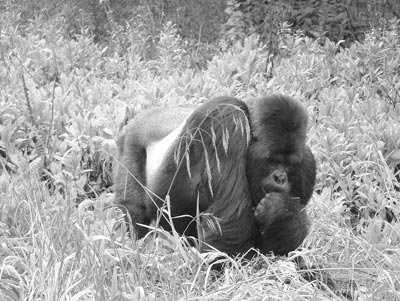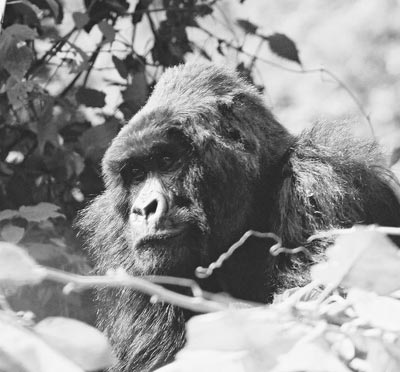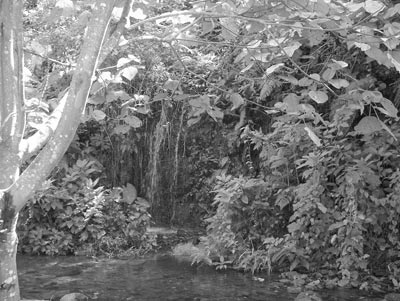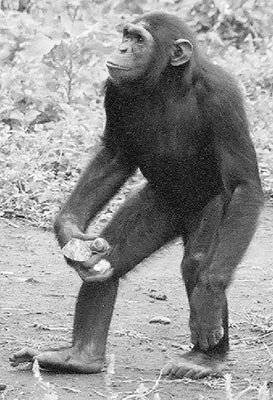Gorilla trekking in Uganda and Rwanda plus Tanzania
Gorilla trekking in the Bwindi Impenetrable Forest in Uganda and the Virunga Mountains in Rwanda was an adventure, an adrenaline rush and the thrill of my life.
The tour that two friends and I took to Uganda and Rwanda started and ended in Entebbe, Uganda, after which we continued on to Arusha, Tanzania, for a day in the city plus a 7-day safari. We arranged our trip through Good Earth Tours (8223 Dunham Station Dr., Tampa, FL 33647; 877/265-9003, www.goodearthtours.com). Their trips are customized, and on ours we had luxury accommodations plus meals.
Our introduction to Uganda was an immediate high-speed boat trip to the (Jane Goodall) Ngamba Island Chimpanzee Sanctuary, where we spent several hours mesmerized by the chimps. In the wild, they travel in families of 40-plus.
On our way to the gorillas in Bwindi National Park, we made stops in Kibale Forest National Park and Queen Elizabeth National Park.
What a thrill to be close to some of the 600 gorillas (the number varies by reports) remaining in the wilds of Uganda, Rwanda and the Democratic Republic of the Congo. The area is so vast, the jungles so thick and the rangers so few, it is difficult to protect the gorillas.
The lowland gorillas are decreasing in numbers through poaching, land encroachment and human-transmitted disease. The highland gorillas we visited are increasing slightly in numbers.
Tourists are restricted to 18 per day (six per group) in Bwindi and 32 per day (eight per group) in Parc National des Volcans in Rwanda. Each trek is accompanied by a ranger guide, ranger trackers and military personnel.
While gorillas are gentle, the highland gorilla males can reach 5½ feet in height and weigh up to 400 pounds (some say 500). The females are about 12 inches shorter and 200-plus pounds.
Our first trek was in Bwindi National Park, located in the southwestern corner of Uganda and literally across the street from the Congo. Select a good driver, as the roads from Entebbe are rough and can be dangerous. I understand the new road from Kampala has been completed partway.
We saw a few tourists at the lodges, but we were “the show in town” as we stopped in villages while driving through the beautiful mountains and valleys. There were several choices for lodging, but our Gorilla Forest Camp was very special.
Dr. Scott and Carole Kellermann, from my small town in the California Sierra foothills, live part-time in Bwindi National Park. When the Ugandan government decided to protect the gorillas and increase tourism, the meat-eating Batwa people were displaced from the Bwindi forest. Dr. Scott (as he is called) and Carole built a hospital and schools, which later were expanded to all the tribes for hundreds of miles.
I’ve been to Africa several times, but when I visited the Kellermanns I felt I had “touched” the real Africa. Volunteers to work in the hospital or visitors are welcome. Visit the website www.pygmies.net or
Gorilla trekking starts at 7 a.m. at the game park headquarters. Our gorilla family was assigned to us the day our trekking permit was issued. In the interim 11 months, they had moved from a location near Bwindi town to deep in the Bwindi Impenetrable Forest, resulting in a 9-hour trek.
The Bwindi forest is unbelievably beautiful, with thick green jungle foliage, waterfalls and streams. We were most appreciative of our two porters, one to carry our equipment and food and one to make sure we made it up the extremely steep and slippery mountains.
The trek started with instructions on what to do if a gorilla should charge us as a warning that we were too close. We later not only lowered our heads to an alpha male silverback but went into the learned “real humble” posture.
Off we six excited tourists went with our excellent guide, military guards, porters and a man with a large machete. My friends and I have one pace, which turned out to be the best way to trek, as others became tired very quickly.
The narrow trail went through banana trees and small, 2- to 3-hut hut villages, but we then followed the man with the machete as he cut a path through the jungle. The guide was in constant radio contact with the headquarters and other park “trekker” rangers who tracked and directed us to our gorilla family, an alpha male silverback heading a family of six females and adolescents plus one baby.
We finally arrived, a little wet from the intermittent rains and heat but with our adrenaline at an all-time high. We left everything with the porters and took only cameras and water.
The gorillas were in the trees, swinging above us and playing with the young. What a sight! The alpha male grunted, and off they went up yet another mountain. We were exhausted but started running after them up the hill, camera in hand. That is when we used our “humble lesson” as the silverback charged but stopped 25 yards short of us.
There is no flash photography allowed, and you have only one hour to spend with the gorillas. The guide counts down the last 10 minutes and then you have to leave. The limited time is so the gorillas will remain wild and in their natural habitat.
Exhausted, we trekked another four hours back to camp. We did not even stop at the banana “moonshine” still on the side of the path but beat it back as soon as possible to our wonderful Gorilla Forest Camp, where we sipped wine on the patio while reviewing our fantastic photos.
For our second gorilla trek, we drove to Parc National des Volcans in Rwanda. The country and people were so colorful, we thought we were in a National Geographic special. The view of the Virunga volcanoes was great, and gorilla trekking in Rwanda was much more civilized. The terrain was more open, the mountains were gentle and the gorillas, closer. The forest was nice, but it didn’t have the incredible beauty of the Bwindi forest.
Off we went at 8 a.m. with our guide (in radio contact), porters, military and the machete man. We passed the small stone fence built by the government to stop locals from further expanding their fields into the parkland and gorilla habitat. As in Uganda, our small path turned into jungle and we followed the man with the machete.
We thought our fellow tourists in rubber boots and Levis looked ridiculous until we encountered the stinging nettles. Our guide gave us a short lesson in how to use a local weed, found on the trail, to stop the sting.
Within 1½ hours we came upon a large male gorilla peeking at us from the trees. We followed him back to a large family of 10-plus males, females and youngsters. The pace was such that I finally gave up and just slid down the slippery mountain on my rear.
The family was enjoying lunch in a bamboo forest. They looked at us and, along with the trekker rangers, started grunting. Our guide told us that their constant “talking” with the gorillas was to assure them that we would not hurt them.
All of a sudden there was a grunt-grunt and hand motion by the guide. We stepped back to let a large female with a baby on her back walk by so close I could have touched them.
Overhead and all around us the young gorillas were playing in the trees or on the forest floor or staring at us as they continued to strip and eat bamboo in large amounts.
The big silverback came into the bamboo forest clearing, looked at us, grunted and walked off. We all followed, ending up in a meadow, where he thrilled us by walking through and eating wildflowers and talking with the guards. Then came the 10-minute countdown — 3, 2, 1 — and we said good-bye to our gorilla family.
Back at our lodging in the Gorilla Nest Lodge, all agreed we needed more time in Rwanda to visit Dian Fossey’s nearby gravesite and the Karisoke Research Centre, where she spent 20 years studying gorillas.
Bwindi National Park and Parc National des Volcans are wonderful for gorilla trekking. In Uganda the gorillas are in their thick jungle foliage habitat, and in Rwanda you can view them in a more open area where they may walk right by you.
From the lodge, I recommend that you drive the 120 kilometers (three to four hours) to Kigali, Rwanda, to catch your flight home or to your next destination instead of driving eight to 10 hours (as we did) back to Entebbe, staying overnight and leaving early to catch a flight to Tanzania.
I inquired about prices for the same trip in 2008. Not including visas or international airfare from San Francisco, California, to Entebbe, Uganda, with return from Nairobi, Kenya (about $1,960-$2,700), the Uganda/Rwanda portion averages out to $380-$420 per person per day plus $500 per day in trekking fees on trekking days. So a 9-day/9-night trip that includes two days of trekking could cost $4,420-$4,780. Important — in addition, we tipped the porters and park rangers.
For the Tanzania portion, Good Earth Tours quotes an average of $3,000 for a first-class/deluxe 8-day tour. Add the air to get from Rwanda to Nairobi, Kenya, at $245-$370 one way, plus $352 for the round trip to Tanzania. (Some Monday, Wednesday or Friday flights can reduce the total fare to $446, on Rwandair, or $491, on Kenya Airways.)
A couple of travel days rounded our trip out to 19 days and 16 nights.
Virunga National Park is shared between Uganda, Rwanda and the Democratic Republic of Congo. ITN reported that rebel forces are suspected of killing a number of gorillas and driving out rangers in the Congo portion in July 2007 (Nov. ’07, pg. 100). I asked Good Earth Tours about the safety of gorilla trekking in the Virunga mountains and their ground agency in Rwanda replied that the Congo part is insecure but the Rwanda side is safe and they have tourists tracking the gorillas daily.
If anyone would like more information about our trip, please e-mail me c/o ITN. Gorilla trekking is an experience of a lifetime and should not be missed by the adventuresome traveler.
ROSALIE BAKER
Nevada City, CA




